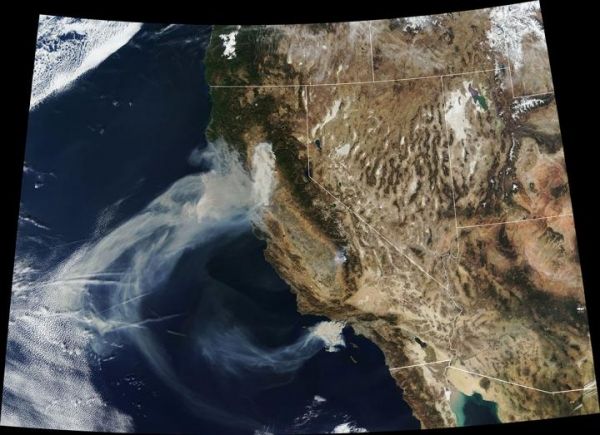November 8, 2018 was a dry day in Butte County, California. The state was in its sixth consecutive year of drought, and the county had not had a rainfall event producing more than a half inch of rain for seven months. The dry summer had parched the spring vegetation, and the strong northeasterly winds of autumn were gusting at 35 miles per hour and rising, creating red flag conditions: Any planned or unplanned fires could quickly get out of control.
Sure enough, just before daybreak, strong winds whipped a stray spark from a power line into an inferno. The Camp Fire became the most destructive fire in California’s history, scorching approximately 240 square miles, destroying nearly 14,000 buildings, causing billions of dollars in damage and killing 88 people. Later the same day, the Woolsey Fire broke out in Los Angeles County, burning 150 square miles and killing three.
Droughts can create ideal conditions for wildfires. Lack of rain and low humidity dry out trees and vegetation, providing fuel. In these conditions, a spark from lightning, electrical failures, human error or planned fires can quickly get out of control.
Global climate change is predicted to change precipitation and evaporation patterns around the world, leading to wetter climate in some areas and drier in others. Areas that face increasingly severe droughts will also be at risk for more and larger fires. Several NASA missions collect valuable data to help scientists and emergency responders monitor droughts and fires. Some instruments monitor water in and below the soil, helping to assess whether areas are moving toward dangerous droughts. Others watch for heat and smoke from fires, supporting both research and active disaster recovery.
Read more at: NASA/GODDARD SPACE FLIGHT CENTER
Droughts can create ideal conditions for wildfires. Dry trees and vegetation provide fuel. Low soil and air moisture make it easier for fires to spread quickly. In these conditions, a spark from lightning, electrical failures, human error or planned fires can quickly get out of control. As Earth's climate warms and precipitation patterns change, increasingly severe droughts will leave some areas of the world vulnerable to increasingly severe fires. (Photo Credit: Earth Observatory)


